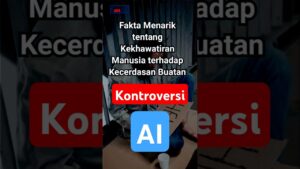Here are 3 critical LLM compression strategies to supercharge AI performance

Join our daily and weekly newsletters for the latest updates and exclusive content on industry-leading AI coverage. Learn More
In today’s fast-paced digital landscape, businesses relying on AI face new challenges: latency, memory usage and compute power costs to run an AI model. As AI advances rapidly, the models powering these innovations have grown increasingly complex and resource-intensive. While these large models have achieved remarkable performance across various tasks, they are often accompanied by significant computational and memory requirements.
For real-time AI applications like threat detection, fraud detection, biometric airplane boarding and many others, delivering fast, accurate results becomes paramount. The real motivation for businesses to speed up AI implementations comes not only from simply saving on infrastructure and compute costs, but also from achieving higher operational efficiency, faster response times and seamless user experiences, which translates into tangible business outcomes such as improved customer satisfaction and reduced wait times.
Two solutions instantly come to mind for navigating these challenges, but they are not without drawbacks. One solution is to train smaller models, trading off accuracy and performance for speed. The other solution is to invest in better hardware like GPUs, which can run complex high-performing AI models at a low latency. However, with GPU demand far exceeding supply, this solution will rapidly drive up costs. It also does not solve the use case where the AI model needs to be run on edge devices like smartphones.
Enter model compression techniques: A set of methods designed to reduce the size and computational demands of AI models while maintaining their performance. In this article, we will explore some model compression strategies that will help developers deploy AI models even in the most resource-constrained environments.
How model compression helps
There are several reasons why machine learning (ML) models should be compressed. First, larger models often provide better accuracy but require substantial computational resources to run predictions. Many state-of-the-art models, such as large language models (LLMs) and deep neural networks, are both computationally expensive and memory-intensive. As these models are deployed in real-time applications, like recommendation engines or threat detection systems, their need for high-performance GPUs or cloud infrastructure drives up costs.
Second, latency requirements for certain applications add to the expense. Many AI applications rely on real-time or low-latency predictions, which necessitate powerful hardware to keep response times low. The higher the volume of predictions, the more expensive it becomes to run these models continuously.
Additionally, the sheer volume of inference requests in consumer-facing services can make the costs skyrocket. For example, solutions deployed at airports, banks or retail locations will involve a large number of inference requests daily, with each request consuming computational resources. This operational load demands careful latency and cost management to ensure that scaling AI does not drain resources.
However, model compression is not just about costs. Smaller models consume less energy, which translates to longer battery life in mobile devices and reduced power consumption in data centers. This not only cuts operational costs but also aligns AI development with environmental sustainability goals by lowering carbon emissions. By addressing these challenges, model compression techniques pave the way for more practical, cost-effective and widely deployable AI solutions.
Top model compression techniques
Compressed models can perform predictions more quickly and efficiently, enabling real-time applications that enhance user experiences across various domains, from faster security checks at airports to real-time identity verification. Here are some commonly used techniques to compress AI models.
Model pruning
Model pruning is a technique that reduces the size of a neural network by removing parameters that have little impact on the model’s output. By eliminating redundant or insignificant weights, the computational complexity of the model is decreased, leading to faster inference times and lower memory usage. The result is a leaner model that still performs well but requires fewer resources to run. For businesses, pruning is particularly beneficial because it can reduce both the time and cost of making predictions without sacrificing much in terms of accuracy. A pruned model can be re-trained to recover any lost accuracy. Model pruning can be done iteratively, until the required model performance, size and speed are achieved. Techniques like iterative pruning help in effectively reducing model size while maintaining performance.
Model quantization
Quantization is another powerful method for optimizing ML models. It reduces the precision of the numbers used to represent a model’s parameters and computations, typically from 32-bit floating-point numbers to 8-bit integers. This significantly reduces the model’s memory footprint and speeds up inference by enabling it to run on less powerful hardware. The memory and speed improvements can be as large as 4x. In environments where computational resources are constrained, such as edge devices or mobile phones, quantization allows businesses to deploy models more efficiently. It also slashes the energy consumption of running AI services, translating into lower cloud or hardware costs.
Typically, quantization is done on a trained AI model, and uses a calibration dataset to minimize loss of performance. In cases where the performance loss is still more than acceptable, techniques like quantization-aware training can help maintain accuracy by allowing the model to adapt to this compression during the learning process itself. Additionally, model quantization can be applied after model pruning, further improving latency while maintaining performance.
Knowledge distillation
This technique involves training a smaller model (the student) to mimic the behavior of a larger, more complex model (the teacher). This process often involves training the student model on both the original training data and the soft outputs (probability distributions) of the teacher. This helps transfer not just the final decisions, but also the nuanced “reasoning” of the larger model to the smaller one.
The student model learns to approximate the performance of the teacher by focusing on critical aspects of the data, resulting in a lightweight model that retains much of the original’s accuracy but with far fewer computational demands. For businesses, knowledge distillation enables the deployment of smaller, faster models that offer similar results at a fraction of the inference cost. It’s particularly valuable in real-time applications where speed and efficiency are critical.
A student model can be further compressed by applying pruning and quantization techniques, resulting in a much lighter and faster model, which performs similarly to a larger complex model.
Conclusion
As businesses seek to scale their AI operations, implementing real-time AI solutions becomes a critical concern. Techniques like model pruning, quantization and knowledge distillation provide practical solutions to this challenge by optimizing models for faster, cheaper predictions without a major loss in performance. By adopting these strategies, companies can reduce their reliance on expensive hardware, deploy models more widely across their services and ensure that AI remains an economically viable part of their operations. In a landscape where operational efficiency can make or break a company’s ability to innovate, optimizing ML inference is not just an option — it’s a necessity.
Chinmay Jog is a senior machine learning engineer at Pangiam.
DataDecisionMakers
Welcome to the VentureBeat community!
DataDecisionMakers is where experts, including the technical people doing data work, can share data-related insights and innovation.
If you want to read about cutting-edge ideas and up-to-date information, best practices, and the future of data and data tech, join us at DataDecisionMakers.
You might even consider contributing an article of your own!
Read More From DataDecisionMakers













